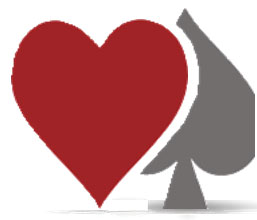THE SOUL READ
Observe opponents through critical analysis and then attack!
 A poker “Soul Read” is when a player supposedly looks into the heart of their opponent and through some innate power is able to see their cards—then trumps them with a perfect play. Now, I’ve never played against a soothsayer in a Vegas Mentalist show, but let’s agree that the above is impossible, so let’s look at what’s really going on.
A poker “Soul Read” is when a player supposedly looks into the heart of their opponent and through some innate power is able to see their cards—then trumps them with a perfect play. Now, I’ve never played against a soothsayer in a Vegas Mentalist show, but let’s agree that the above is impossible, so let’s look at what’s really going on.
When poker experts discuss the art of making a soul read they’re referring to making an accurate— though extremely challenging and difficult— decision and doing it with a confidence that goes above and beyond the available information in the hand. This is tied to bluffing, but the soul read is more than that, calculating the odds in your favor before appearing to walk the plank.
Simply put, it’s all about focus and the art of observation. Poker is about gathering information at the table and making calculated decisions. You need to observe everything your opponents do, whether you’re in the hand or not. Seeing how someone plays their draws or how they behave when they flop the nuts is crucial to making that huge read when it really counts. When you collect information through observations you can then compare data in your head to what you already know about your opponent’s playing tendencies.
Remember that poker, like sports betting, is all about information. The player who collects the most money in the end is the one who gathered the most information and used it correctly. Watching how someone reacts to a flop or observing how they play their draws can be crucial when it comes to making a huge read when the chips (literally) are piled high on the table.
I do the same thing in football and basketball handicapping, gathering as much information as possible long before the games are played. After you accrue the information, then you’re ready to take the next step toward reading into their soul.
The next thing is to read hands. No, not as a palm reader, but as a poker strategist. The way to do that is to break down all possible hands into a range of groupings. For instance, bottom set and top two pair are strong hands and would fall into most players’ value-betting ranges. A tactic like “giving air” (letting a player who is close to folding know that you intend to draw one or more cards, forcing a call) or “Ace High” would be found in most people’s bluffing ranges.
Hands can be broken down into four basic ranges:
Monster Hands and the Nuts: These are hands that your opponent believes are strong enough to bet or raise with and has no problem going all-in. The nut hand is the best possible hand in a given situation; it’s the “ideal hand.” Know when you have them—and don’t blow these opportunities.
Draws: Flush draws, combo draws and open-enders that have a good chance of becoming the best hand but are not yet played.
Made Hands with Showdown Value: Top-pair–type hands that your opponent believes stand a strong chance of being the best hand, but are probably not strong enough to play for stacks.
Bluffs and Air: Hands that have no chance of winning. Strategize about cutting your losses or be prepared to put on your best bluff face.
Always remember that different players have different ranges, techniques and tendencies. Top pair is enough for some players to get their whole stacks in with, while a good player would have no trouble laying down two pair in the right spot.
Winning poker is not a game where one simply reacts. Before any card is dealt or chip is played, look around and analyze your opponents. Does the person on your right elicit aggressive or passive tendencies? If a player is consistently playing hands but you don’t see them betting or raising often, they are passive. If they are always taking the lead with raises, they are attacking or aggressive.
Do they bluff too much? Maybe too little? Are they loose? Or tight? Do they play too many hands? A loose player is someone playing roughly 20% of their hands. The big call or the huge fold might be the end product of the soul read but it’s really a long, carefully thought-out process from the beginning of the hand. And you’re not really gazing into a crystal ball, but carefully watching your opponents—both before and after hands.


